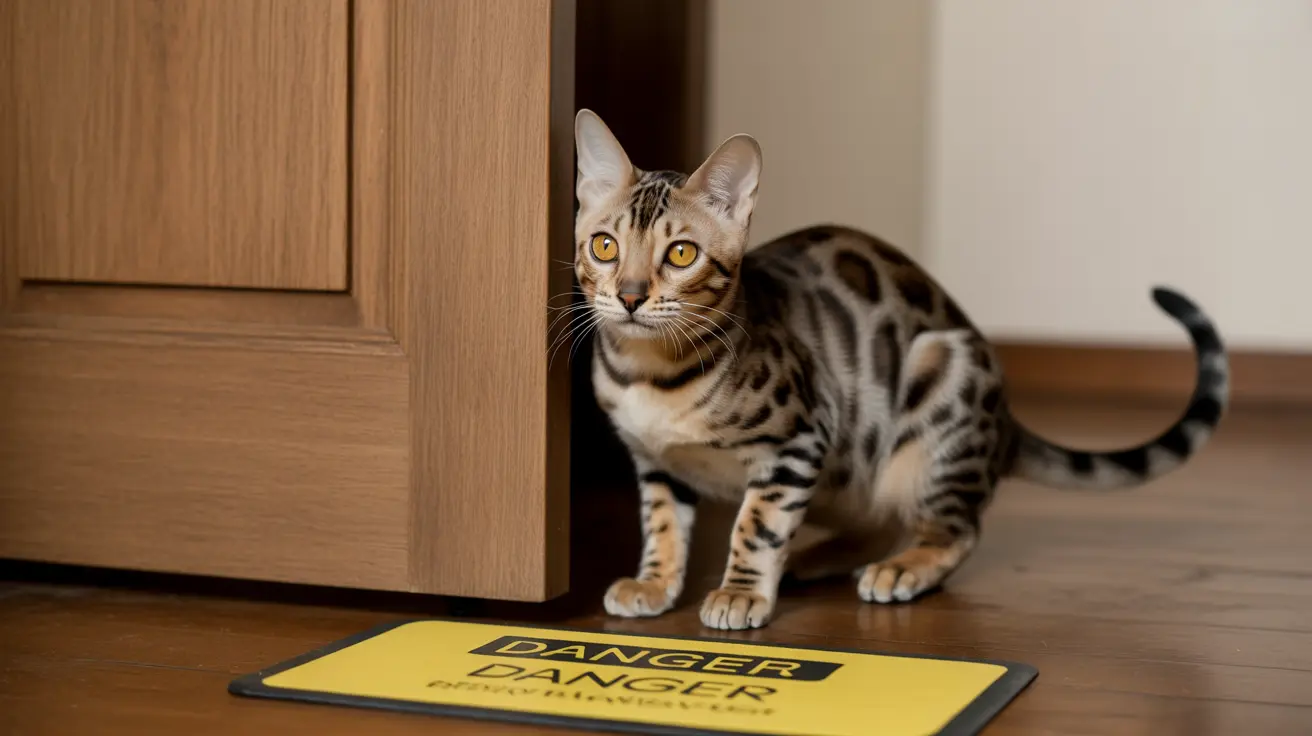Understanding Why Cats Try to Escape
Before implementing prevention strategies, it's crucial to understand what drives your cat's desire to venture outdoors. Natural hunting instincts, mating urges (especially in unneutered cats), and simple curiosity all play significant roles. Former outdoor cats may also feel a strong pull toward their previous territory, making them more likely to attempt escapes.
Physical Barriers and Home Security
The first line of defense in preventing outdoor adventures is securing your home's entry points:
Door Security
- Install automatic door closers
- Use double-door systems or pet gates
- Apply deterrent mats near doorways
- Consider motion-activated deterrents
Window Protection
- Ensure all screens are intact and secure
- Install window guards or limiters
- Use mesh barriers for additional protection
Behavioral Training Techniques
Consistent training can significantly reduce escape attempts:
Positive Reinforcement
- Reward your cat for staying away from doors
- Create positive associations with indoor spaces
- Use treats and praise effectively
Redirection Methods
- Engage in play when approaching doors
- Provide alternative activities during high-risk times
- Establish routine indoor games and exercises
Creating an Enriching Indoor Environment
A stimulating indoor space can satisfy your cat's natural instincts:
- Install cat trees and climbing structures
- Set up window perches with bird-watching opportunities
- Rotate toys regularly to maintain interest
- Create hiding spots and exploration zones
- Consider building a catio for safe outdoor experiences
Safe Outdoor Alternatives
For cats that crave outdoor experiences, consider these controlled options:
- Harness and leash training
- Enclosed outdoor spaces or catios
- Supervised backyard time in secure areas
- Window perches with nature views
Frequently Asked Questions
How can I train my cat to stop trying to escape through doors?
Consistently use positive reinforcement by rewarding your cat when they stay away from doors. Combine this with deterrents like motion-activated air sprays near entry points, and establish a routine of engaging play sessions away from doors.
What are the best ways to secure doors and windows to prevent my cat from getting outside?
Install automatic door closers, use sturdy screens on all windows, and consider double-door systems or pet gates. Regular maintenance checks ensure all security measures remain effective.
How does spaying or neutering affect a cat's desire to escape outdoors?
Spaying or neutering can reduce escape attempts by up to 70%, particularly in younger cats, by eliminating hormone-driven behaviors and the urge to find mates.
What indoor enrichment activities help reduce a cat's urge to go outside?
Provide vertical spaces, interactive toys, puzzle feeders, and dedicated play sessions. Create engaging environments with cat trees, window perches, and rotating toy collections to prevent boredom.
Are there safe options for letting my cat enjoy the outdoors without risking escape?
Yes, consider building a catio, using a secure harness and leash, or creating a screened porch area. These options provide outdoor enrichment while maintaining safety.
Conclusion
Successfully keeping your cat indoors requires patience, consistency, and a multi-faceted approach. By combining physical barriers, behavioral training, and environmental enrichment, you can create a safe and satisfying indoor life for your feline friend. Remember that each cat is unique, so be prepared to adjust your strategies until you find what works best for your pet.






